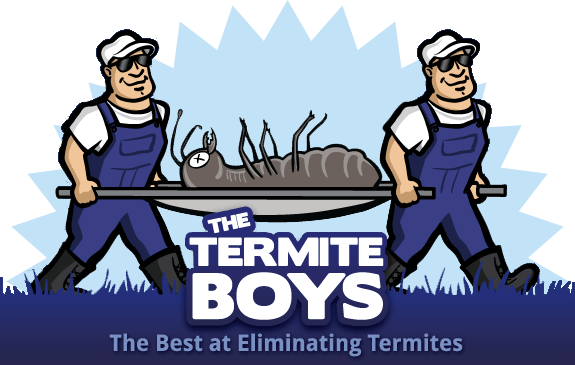Termites may be small, but their impact on your home can be enormous. Left unchecked, these silent destroyers can wreak havoc on everything from wooden furniture to the very structure of your home. Thankfully, preventing a termite infestation is well within your control. By taking proactive measures, you can safeguard your property and avoid the stress of costly repairs down the road.
This blog will walk you through seven practical tips to keep your home termite-free, touching on steps you can take to avoid their entry and warning signs to watch for. Let’s get started!
What Makes Termites a Threat?
Before we explore prevention tips, it helps to understand why termites are such a concern. Termites feed on wood and other materials containing cellulose. Over time, their appetite for destruction can compromise your home’s structure, causing severe damage that may cost thousands of dollars to repair.
Each year, homeowners in the United States spend over $5 billion combating termites and repairing the damage they cause. While this statistic highlights their destructive potential, the good news is that early intervention and consistent prevention can help you stay out of that figure.
1. Limit Moisture Around Your Home
Moisture is a major attractant for termites, especially subterranean ones. These insects thrive in damp environments, which are key to their survival. Here’s how you can limit moisture:
- Fix Leaks Quickly: Dripping faucets, leaking pipes, or roof leaks should be repaired immediately.
- Ensure Proper Drainage: Maintain gutters and downspouts so water flows away from your home’s foundation.
- Use a Dehumidifier: If your basement has excess humidity, invest in a dehumidifier to keep the environment dry.
Keeping your home dry won’t just help keep termites away but will also prevent other issues like mold or mildew.
2. Keep Firewood and Debris Away from Your Home
Do you store firewood or piled-up debris near your home? This could be an open invitation for termites to feast. Wood piles serve as an ideal food source and nesting spot for termites.
How to reduce risk:
- Store firewood at least 20 feet away from your house and elevate it off the ground.
- Dispose of tree stumps, fallen branches, and any leftover wood scraps in your yard.
- Avoid using leftover wood or cardboard for landscaping near your foundation, as this can be a gateway for termites to enter.
3. Seal Entry Points
Termites can squeeze through the tiniest openings in search of food and shelter. Inspect your home for gaps, cracks, or holes that could provide them entry, especially near your foundation.
Where to Inspect:
- Windows and Doors: Caulk around windows and weatherstrip doors to seal openings.
- Utility Lines: Check for gaps where pipes or wires enter your home, and seal them with an appropriate material like expanding foam.
- Foundation Slabs: Repair cracks using concrete sealant before they turn into entry points for termites and other pests.
By creating a solid barrier to entry, you reduce the chances of termites invading your home.
4. Consider Termite-Resistant Materials
To reinforce your home’s defense, consider using materials that deter termites, especially during renovation or construction projects.
Examples of Termite-Resistant Materials:
- Pressure-Treated Wood: This type of wood is chemically treated to repel termites.
- Steel or Concrete: Alternate building materials can replace wood for certain structural elements of your home.
- Synthetic Composites: Decking and outdoor timber replacements are increasingly made with materials that termites can’t digest.
By using these materials strategically, you make it significantly harder for termites to gain a foothold.
5. Schedule Regular Inspections
Even with effective prevention measures, termites may still find ways to sneak into your home. That’s why it’s crucial to schedule professional termite inspections at least once a year.
What a Professional Inspection Includes:
- Checking your home’s foundation for signs of termite activity.
- Inspecting wooden structures for hollowed or damaged areas.
- Identifying mud tubes near your foundation, a common indicator of subterranean termites.
Having trained professionals inspect your property boosts your odds of catching a problem early, long before it escalates.
6. Maintain a Gap Between Soil and Wood
Subterranean termites rely on soil for access to moisture and food. By keeping direct contact between wooden structures and soil to a minimum, you deprive termites of an easy path into your home.
Pro Tips:
- Keep a 6-inch gap between your wooden siding and soil or mulch.
- Use landscaping features like gravel near the base of your home instead of mulch, which can attract termites.
- Repair or replace wooden fences or decking posts that have direct soil contact.
Combining these efforts with your other prevention measures creates an additional line of defense.
Protect Your Home and Stay Termite-Free
Termites may be persistent, but with proper prevention, they don’t stand a chance. By staying proactive, sealing DIY vulnerabilities, and enlisting the help of professionals as needed, you can ensure your home remains protected from termite damage.
Remember, prevention is far easier and more cost-effective than dealing with an infestation. Incorporate these 6 tips to stay termite-free, and take a step toward safeguarding your home and peace of mind.
If you’re not sure where to start, contact a certified pest control professional for advice or schedule an inspection today. Stay ahead of termites and enjoy a safer, more secure home.

